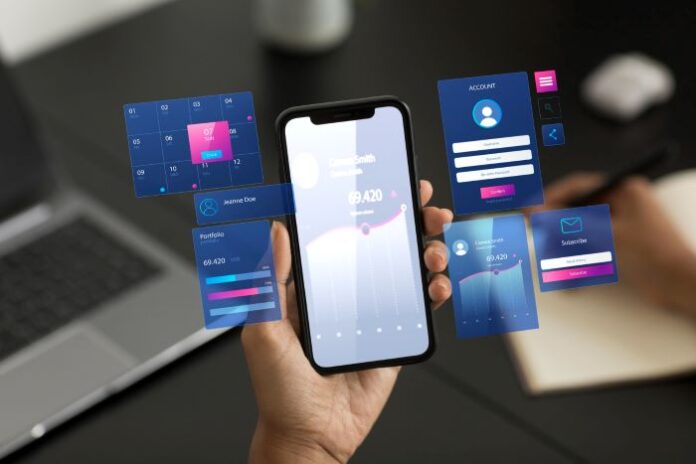The way we interact with technology—at work, at play, and in our daily lives—has undergone a rapid fundamental shift in recent years. The days of two-dimensional screens with limited user experiences (UX) may soon be a thing of the past—and they are already bygones for companies intent on using the most innovative technologies to keep up with and exceed user expectations.
Virtual reality (VR), augmented reality (AR), and artificial intelligence (AI) are driving the UX paradigm shift. We are on the brink of user experiences that are personalized, immersive, and ever-changing. Below, we will explore these transformative technologies and how they are shaping an exciting UX future.
Table of contents
AR, VR, and AI for Beginners—In Case You’ve Been Living Under a Rock
If you’re reading this, it can be safely assumed that you are interested in technology and how it affects your company and career. But you may not yet have taken a deep dive into the “nuts and bolts” of these technologies and what they can do. Perhaps you have, until this point, dismissed them as a novelty rather than a business tool.
If that’s true in your case, the following synopsis will get you up to speed.
Virtual reality is a relatively familiar concept for many. It is a computer-generated, three-dimensional environment or object that a user can interact with through movement. Special equipment is needed to “enter” the environment—at a minimum, dedicated goggles or headgear that transforms a smartphone into goggles. More sophisticated units include a helmet or gloves fitted with sensors. This immersive technology can be used recreationally or for training surgeons, soldiers, and more.
Augmented reality differs from virtual reality in that it doesn’t replace the real world; it modifies it by superimposing computer-generated content and images on it. It can be used for recreational purposes; a prime example is the game Pokémon Go!, which uses a smartphone camera to superimpose cartoon monsters on real-time images of the world around you. It can similarly be informative, overlaying the image with restaurant reviews or historical data, for example. Augmented reality glasses have occasionally hit the market but are not yet widely available.
Artificial intelligence allows computers to mimic human thoughts, and, in turn, human speech and task performance. Machine learning refers to the technologies and algorithms that facilitate the data-crunching, pattern-finding, and decision-making that characterizes AI.
Together, these technologies are effectively blurring the lines between the physical world and the digital one. Next, we will examine how these technologies affect UX professionals.
How AI, AR, and VR Are Changing the UX Job Market
If you examined a UX resume example from years past, you would notice an emphasis on website design and optimization, web development, site conversion, A/B testing, analytics, and landing pages. In most cases, you would find no mention of VR, AR, or AI, because these emerging technologies were in their infancy.
Now, however, knowledge and experience in these fields are highly sought after in UX design job candidates—in some cases, it may be a requirement. This places an urgent need for continuing education squarely in the laps of UX professionals. If they want to stay relevant in their field, they must keep pace with the latest augmented reality and artificial intelligence technologies.
They need to understand what’s out there, how accessible the technologies are to consumers, the potential effects and side effects, and best practices. They also need the technical expertise to create and program virtual environments and train machine learning programs, such as automated chatbots.
In the following section, we will examine key examples of how AI, AR, and VR are reshaping UX in the real world.
AI Can Speak for You
Artificial intelligence has revolutionized customer service. AI chat can respond immediately to customer inquiries. Not only can they answer common questions with pre-programmed responses, but natural-language processing (NLP) models can formulate new responses to unique questions based on the data they’ve been trained on.
While AI chatbots won’t limit the need for human customer service agents entirely, they improve the user experience by reducing wait times.
AI can also be used to personalize user experiences by predicting their needs and patterning the experience after their preferences. For example, shopping platforms that tailor suggested products to the user’s preferences are already common. Other interfaces can be similarly dynamic. A news website, for instance, might use AI to select articles tailored to the user’s previous interests.
As this technology continues to spread, UX designers will be called upon to ensure accurate and ethical experiences. AI applications that designers are working on now include:
- Travel apps that automatically re-book flights when delays are predicted
- Health apps that monitor behaviors, predict problems, and suggest preventative measures
- Virtual assistants that understand a wide range of natural language requests and interface with all of a user’s devices and applications
VR Revolutionizes Remote Work
Virtual reality is transportive. It can bring people together from diverse locations. For example, a company with multiple offices or remote employees might set up a digital workspace to enable collaboration. Job fairs and industry events can take place in digital spaces that include a lobby in which participants can meet and converse, booths they can visit, auditoriums for presentations, and private rooms for interviews.
VR can also be used for training purposes, immersing trainees in worlds and circumstances that would be dangerous or difficult to accommodate in the real world. For example, soldiers or police can train in combat situations and surgeons can operate on digital patients.
VR can also allow professionals to control various devices remotely. For example, soldiers, photographers, or photojournalists can control drones from anywhere in the world. Physicians can use similar technology to operate tiny machines that make surgeries and procedures less invasive. UX developers with specialties in these fields will be needed to make further innovations.
Use AR to Make Customers Happy
AR has already been incorporated into a number of smartphone applications that help customers make purchasing decisions. Examples include:
- A home improvement app that allows the customer to “sample” paint colors by seeing what they would look like on their own walls. The app requires the customer to snap a photo of their room and then superimposes the selected paint color.
- Home decor shopping apps empower consumers to visualize what a piece of furniture, lamp, rug, or decoration would look like in their room by superimposing the item over a real-time image.
- An eyeglasses manufacturer that lets customers “try on” new glasses by superimposing them on a real-time image of the customer’s face. AI programming helps size the glasses to fit the face.
These applications are already on the market, and some have been available for several years. But in the coming months and years, UX designers will be called upon to create and perfect even more AR interfaces. Picture the following:
- An automotive mechanic’s AR goggles overly parts numbers and installation instructions, improving efficiency
- A university student uses an AR smartphone app to identify plants
- A doctor uses an AI-powered AR system to help diagnose skin conditions, read X-rays, or improve baby gender determination via ultrasound.
Key Takeaways
User experience has been likened to a “dance” between humans and the machines we create. UX designers are the choreographers who make the dance enjoyable—they lay the groundwork for the steps via programming and make sure no toes get stepped on through extensive testing. The increasing use of AI, AR, and VR technologies means UX designers have new styles of dance to learn. As these technologies continue to evolve and become ever more integrated into our daily lives, UX design principles allow us to enjoy the ball and appreciate its beauty.
M. James Wilson is a dynamic marketing and recruitment expert with over a decade of experience connecting talented individuals with their dream careers and assisting companies in finding the perfect hires. Currently thriving as a Career Advisor and Research Specialist at ResumeCoach.com, James specializes in providing insightful career advice, job search strategies, and crafting standout resumes and cover letters.











